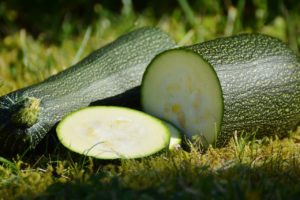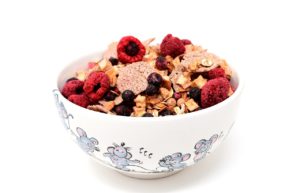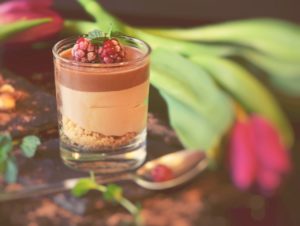Everyone old enough to walk appreciates the value of flexibility and ease of movement. Unfortunately many of us take such good things for granted. A famous folksinger sang, “You don’t know what you’ve got till it’s gone.” That’s certainly true for millions Americans who live with stiff and uncomfortable joints.
Fortunately there are a number of nutrients available that provide the vital components of healthy joint structure and function and ease of mobility. These nutrients are referred to as “chondroprotective agents,” and include glucosamine and chondroitin, which supply the raw material necessary to produce new cartilage, and may even help rebuild worn cartilage. Other chondroprotective nutrients and herbs, like Cetyl Myristoleate, MSM, and Boswellin, work synergistically with glucosamine and chondroitin and further support normal joint function.
To understand how chondroprotective agents work, one must first understand how joints work. The key element in human joints is articular cartilage, the shock-absorbing tissue that connects two bones together and allows pain-free movement. Articular cartilage is comprised of two different molecules, collagen and proteoglycans, with the remainder composed primarily of water (65-85%). Collagen, a protein that binds tissue together, provides elasticity. Proteoglycans, composed of sugars and protein, absorb water, which provides lubrication and resiliency, nature’s shock absorber for your joints. Both compounds are produced by chondrocytes, caretaker cells responsible for the formation and maintenance of cartilage. A deficiency in any one of the above constituents will increase the likelihood of wear and tear on articular cartilage, which can eventually lead to compromised joint function. Glucosamine and chondroitin are safe, natural and effective nutrients that support healthy joint function by supplying the materials needed to produce collagen and proteoglycans.
Arnica Native to Europe and southern Russia, Arnica montana is a perennial plant with bright yellow, daisylike flowers. Some of its common names include leopard’s bane, wolf’s bane, and mountain tobacco. Arnica montana has a long history of use in herbal healing, as do other arnica species grown in the western part of North America. The dried flower heads and occasionally the underground stems and roots are the source of medicinal arnica.
• Muscle strains and sprains. Arnica is widely applied to ease the inflammation and pain of muscle strains and sprains caused by overuse or injury. Although results have been contradictory, some studies concluded that for a short period immediately following a marathon run, arnica reduced muscle soreness. The effect was only temporary, however.
• Arthritic joints. Inflamed and painful joints are said to benefit from arnica as well. Using the herb in a hot, moist compress may be helpful for arthritis pain, though it is not known whether it is simply the heat or the arnica that provides the relief.
• Psoriasis and eczema. Numerous herbal formulas for these persistent skin disorders contain extracts of arnica, which may help given its anti-inflammatory and numbing qualities.
• Insect bites. Because of its anti-inflammatory and antiseptic effects, topical arnica is believed to reduce the swelling and pain caused by insect bites. It may also help prevent infection.
Celadrin is a medically and clinically proven pain management compound developed through a proprietary process of esterifying oils. Celadrin is a novel, all natural ingredient which has been medically shown to reduce inflammation and pain with no side effects. Celadrin systematically enhances and lubricates cell membranes throughout the body providing youthful cell fluidity and elasticity. This includes the enhancement of fluids that cushions your bones and joints to maintain flexibility and mobility so that you can move with ease and pain free. Celadrin has been proven to provide cumulative (continuous and restorative) benefit. In a double blind clinical trial, oral Celadrin showed significant benefit beyond the arthritic medication the subjects were taking – with cumulative improvement shown throughout the study.
Chondroitin sulfate consists of repeating chains of molecules called glycosaminoglycans (GAGs). Chondroitin sulfate is a major constituent of cartilage, providing structure, holding water and nutrients, and allowing other molecules to move through cartilage—an important property, as there is no blood supply to cartilage. The only significant food source of chondroitin sulfate is animal cartilage.
Glucosamine is composed of glucose (a sugar) and glutamine (an amino acid). It is utilized by chondrocytes to form glycosaminoglycans (GSG) and proteoglycans (PG). Both of these constituents attract and bind water into cartilage, increasing resiliency. Research indicates that glucosamine may actually help your body repair damaged or eroded cartilage. A number of studies have been conducted on glucosamine sulfate and glucosamine hydrochloride, with a preponderance of positive results. Glucosamine sulfate is considered the more effective of the two.
For a long time, glucosamine dominated the market among supplements used to ease joint pain. Now, many practitioners prefer to use a combination of both glucosamine and chondroitin sulfate. Many have found this combination to be effective, particularly for runners, who tend to develop problems with their knees. Glucosamine and chondroitin sulfate are well absorbed by the molecules that make up cartilage. They are not available from food. It is not uncommon to have to take these supplements indefinitely to continue to experience relief.
MSM Methyl-sulfonyl-methane is a naturally occurring sulfur compound found in our bodies as well as in many common beverages and foods, including milk, coffee, tea and green vegetables. In its purified chemical form, it is an odorless, essentially tasteless, white, water-soluble crystalline solid. It is one of the safest substances in biology, similar in toxicity to water.
Recent research has shown that the results of arthroscopic surgery for osteoarthritis in the knee is no different than that of placebo. This gives people further reason to at least give supplements, such as chondroitin sulfate, a try before enduring more invasive, expensive approaches.
Benefits of Joint Support Formulas
• helps rebuild and repair worn cartilage
• support healthy joint function by supplying the materials needed to produce collagen and proteoglycans
• eases joint pain






